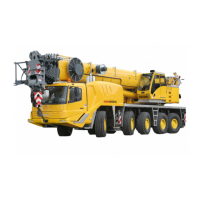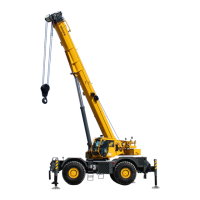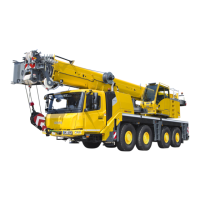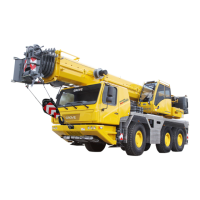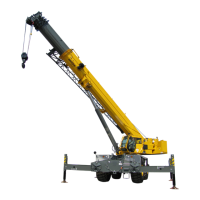5540F/YB5515 SERVICE MANUAL
1-8 Published 10-21-2010, Control# 198-04
Batteries
Clean batteries by scrubbing them with a solution of baking
soda and water. Rinse with clear water. After cleaning, dry
thoroughly and coat terminals and connections with an anti
corrosion compound or grease.
If the machine is to be stored or not used for an extended
period of time, the batteries should be removed. Store the
batteries in a cool (not subfreezing), dry place, preferably on
wooden shelves. Never store on concrete. A small charge
should be introduced periodically to keep the specific gravity
rating at recommended level.
Hydraulic Systems
Cleanliness
Contaminants in a hydraulic system affect operation and will
result in serious damage to the system components. Dirty
hydraulic systems are a major cause of component failures.
Keep the System Clean
When removing components of a hydraulic system, cover all
openings on both the component and the crane.
If evidence of foreign particles is found in the hydraulic
system, flush the system.
Disassemble and assemble hydraulic components on a
clean surface.
Clean all metal parts in a nonflammable cleaning fluid. Then
lubricate all components to aid in assembly.
Sealing Elements
Inspect all sealing elements (O-ring, gaskets, etc.) when
disassembling and assembling the hydraulic system
components. Installation of new elements is always
recommended.
Hydraulic Lines
When installing metal tubes, tighten all bolts finger-tight.
Then, in order, tighten the bolts at the rigid end, the
adjustable end, and the mounting brackets. After tubes are
mounted, install the hoses. Connect both ends of the hose
with all bolts finger-tight. Position the hose so it does not rub
on the machine or another hose and has a minimum of
bending and twisting. Tighten both couplings.
Due to manufacturing methods there is a natural curvature to
a hydraulic hose. The hose should be installed so any bend
is with this curvature.
Visual Inspection of Hoses and Fittings
1. Visually inspect hoses and fittings once a month or
every 250 hours for the following:
• Leaks at hose fitting or in hose
• Damaged, cut, or abraded cover
• Exposed reinforcement
• Kinked, crushed, flattened, or twisted hose
• Hard, stiff, heat cracked, or charred hose
• Blistered, soft, degraded, or loose cover
• Cracked, damaged, or badly corroded fittings
• Fitting slippage on hose
• Other signs of significant deterioration
If any of the above conditions exist, evaluate hose
assemblies for correction or replacement. For replacement
of hose assemblies, refer to your Manitowoc Crane Care
Parts Manual.
2. At the same service interval, visually inspect all other
hydraulic components and valves for the following:
• Leaking ports.
• Leaking valve sections or manifolds and valves installed
into cylinders or onto motors.
• Damaged or missing hose clamps, guards, or shields.
• Excessive dirt and debris around the hose assemblies.
If any of these conditions exist, address them appropriately.
3. All hydraulic hose assemblies are recommended to be
replaced after 8000 hours of service life.
DANGER
High Pressure/Temperature Hazard!
Exercise extreme care around pressurized hydraulic
systems. DO NOT work on a hydraulic system while it is in
operation or until all pressure is released.
Hydraulic oil is hot, it can cause severe burns.
Pressurized hydraulic oil can cause death or serious
injury.
Stay clear of all hydraulic oil leaks. Relieve system
pressure and use a piece of cardboard or paper to
check for leaks. Do not use your hands.
Fluid injected into skin must be surgically removed
within a few hours by a doctor familiar with this type of
injury or gangrene will result.
Reference Only
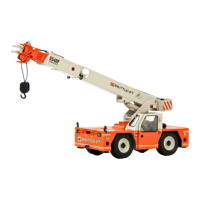
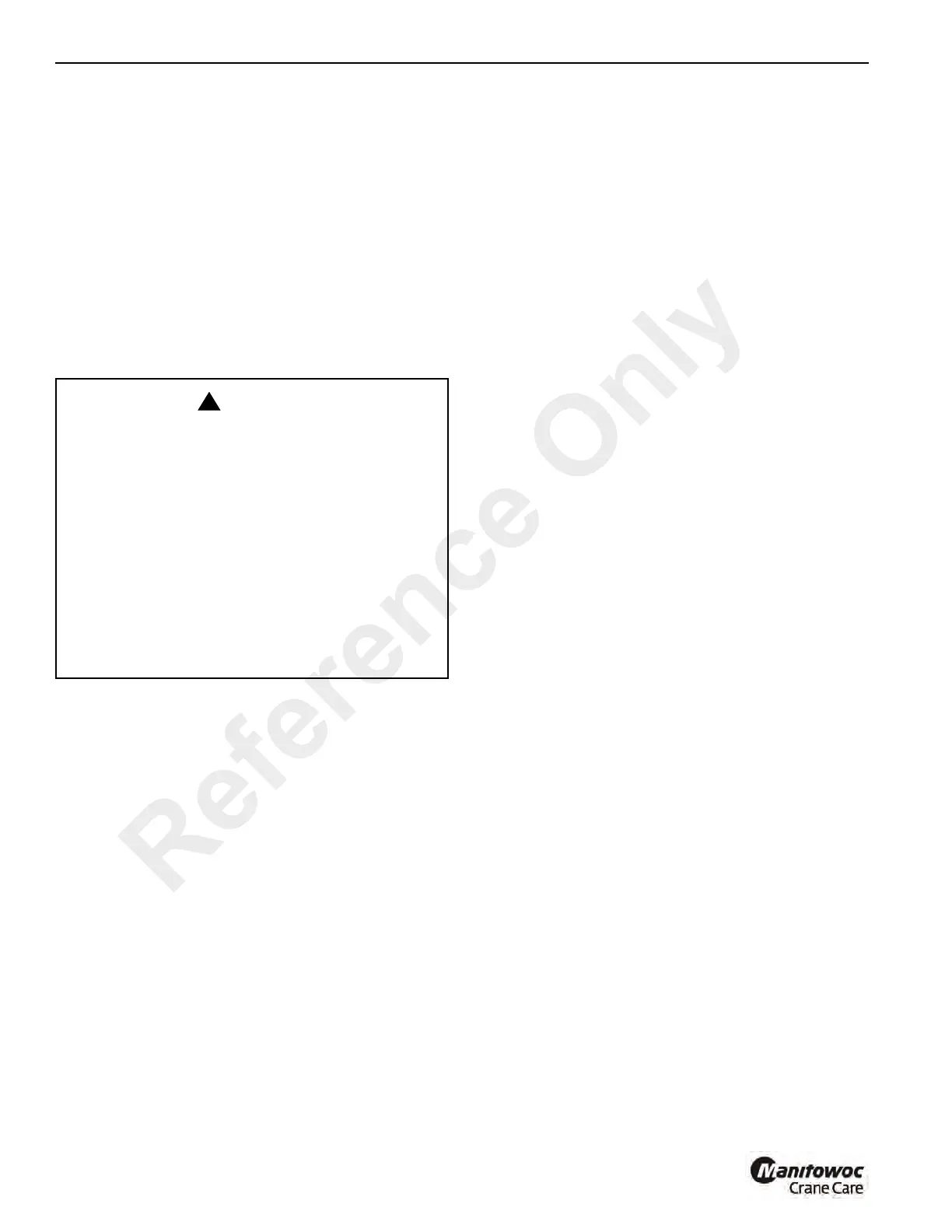